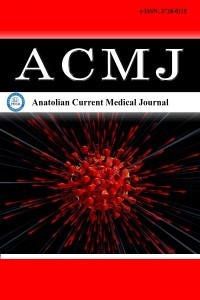1.
Calhoun DA, Jones D, Textor S, et al. Resistant hypertension: diagnosis, evaluation, and treatment. Hypertension. 2008;51(6): 1403-1419.
2.
Mansia G, De Backer G, Dominiczak A, et al. 2007 ESH-ESC guidelines for the management of arterial hypertension: the task force for the management of arterial hypertension of the European Society of Hypertension (ESH) and of the European Society of Cardiology (ESC). Blood Press 2007;16(3):135-232.
3.
The ALLHAT Officers and Coordinators for the ALLHAT Collaborative Research Group. The Antihypertensive and Lipid-Lowering Treatment to Prevent Heart Attack Trial. Major outcomes in high-risk hypertensive patients randomized to angio-tensin-converting enzyme inhibitor or calcium channel blocker vs. diuretic: the Antihypertensive and Lipid-Lowering Treatment to Prevent Heart Attack Trial (ALLHAT). JAMA. 2002;288(23):2981-2997.
4.
Cushman WC, Ford CE, Cutler JA, et al. Success and predictors of blood pressure control in diverse North American settings: the Antihypertensive and Lipid-Lowering and Treatment to Prevent Heart Attack Trial (ALLHAT). J Clin Hypertens. 2002;4(6):393-404.
5.
Lloyd-Jones DM, Evans JC, Larson MG, O’Donnell CJ, Rocella EJ, Levy D. Differential control of systolic and diastolic blood pressure: factors associated with lack of blood pressure control in the community.Hypertension.2000;36(4):594-599.
6.
Winkelmayer WC, Stampfer MJ, Willett WC, Curhan GC. Habitual caffeine intake and the risk of hypertension in women. JAMA. 2005;294(18):2330-2335.
7.
Pimenta E, Gaddam KK, Oparil S. Mechanisms and treatment of resistant hypertension. J Clin Hypertension. 2008;10(3):239-244.
8.
Gök F, Demir ME. Diagnosis and treatment of monogenic hypertension in children: monogenic hypertension.J Eur Intern Med Professionals.2024;2(1):31-39.
9.
Carey RM, Calhoun DA, Bakris GL,et al. American Heart Association Professional/Public Education and Publications Committee of the Council on Hypertension; Council on Cardiovascular and Stroke Nursing; Council on Clinical Cardiology; Council on Genomic and Precision Medicine; Council on Peripheral Vascular Disease; Council on Quality of Care and Outcomes Research; and Stroke Council. Resistant Hypertension: Detection, Evaluation, and Management: A Scientific Statement From the American Heart Association. Hypertension. 2018;72(5):e53-e90.
10.
Viera AJ. Resistant hypertension. J Am Board Fam Med. 2012; 25(4):487-495.
11.
Omura M, Saito J, Yamaguchi K, Kakuta Y, Nishikawa T. Prospective study on the prevalence of secondary hypertension among hypertensive patients visiting a general outpatient clinic in Japan. Hypertens Res. 2004;27(3):193-202.
12.
Pedrosa RP, Drager LF, Gonzaga CC, et al. Obstructive sleep apnea: the most common secondary cause of hypertension with resistant hypertension. Hypertension. 2011;58(5):811-817.
13.
Lamirault G, Artifoni M, Daniel M, Barber-Chamoux N, Nantes University Hospital Working Group On Hypertension. Resistant hypertension: novel insights. Curr Hypertens Rev. 2020;16(1):61-72.
14.
Mohler ER III. Peripheral arterial disease: identification and implications. Arch Intern Med. 2003;163(19):2306-2314.
15.
Chobanian AV, Bakris GL, Black HR, et al. the seventh report of the joint national committee on prevention, detection, evaluation, and treatment of high blood pressure: the JNC 7 report. JAMA. 2003; 289(19):2560-2572.
16.
Harding SM. Prediction formulae for sleep-disordered breathing. Curr Opin Pulm Med. 2001;7(6):381-385.
17.
Türkiye Endokrinoloji ve Metabolizma Derneği, Tiroid Çalışma Grubu. Tiroid Hastalıkları Tanı ve Tedavi Kılavuzu 2020. Türkiye Klinikleri: 2020. Available from: https://file.temd.org.tr/Uploads/publications/guides/documents/20200929134733-2020tbl_kilavuzf527c34496.pdf?a=1
18.
Funder JW, Carey RM, Fardella C, et al. Case detection, diagnosis and treatment of patient with primary aldosteronism: an endocrine society clinical practice guideline. J Clin Endocrinol Metab. 2008;93(9):3266-3281.
19.
Sawka AM, Jaeschke R, Singh RJ, Young WF Jr. A comparison of biochemical tests for pheochromocytoma: measurement of fractionated plasma metanephrines compared with the combination of 24-hour urinary metanephrines and catecholamines. J Clin Endocrinol Metab. 2003;88(2):553-558.
20.
Shivashankara VU, Shivalli S, Pai BH, et al. A comparative study of sonographic grading of renal parenchymal changes and estimated glomerular filtration rate (eGFR) using modified diet in renal disease formula. J Clin Diagn Res. 2016;10(2):TC09-TC11.
21.
Seiler L, Rump LC, Schulte-Mönting J, et al. Diagnosis of primary aldosteronism: value of different screening parameters and influence of antihypertensive medication. Eur J Endocrinol. 2004;150(3):329-337.
22.
Morillas P, Castillo J, Quiles J, et al. Prevalence of primary aldosteronism in hypertensive patients and its effect on the heart. Rev Esp Cardiol. 2008;61(4):418-421.
23.
Kumar N, Calhoun DA, Dudenbostel T. Management of patients with resistant hypertension: current treatment options. Integr Blood Press Control. 2013;6:139-151.
24.
Textor SC, Lerman L. Renovascular hypertension and ischemic nephropathy.Am J Hypertens. 2010;23(11):1159-1169.
25.
Renovascular Hypertension. In: Kaplan NM, Lieberman E, Neal WA. Kaplan’s Clinical Hypertension. 8th ed. Lippincott Williams & Wilkins: 2002:381-403.
26.
Logan AG, Perlikowski SM, Mente A, et al. High prevalence of unrecognized sleep apnoea in drug-resistant hypertension. J Hypertens. 2001;19(12):2271-2277.
27.
Force AHT. AACE Guidelines.Endocr Pract.2006;12(2):193.
28.
Mulatero P, Rabbia F, Milan A, et al. Drug effects on aldosterone/plasma renin activity ratio in primary aldosteronism. Hypertension. 2002;40(6):897-902.
29.
Klein I, Ojamaa K. Thyroid hormone and the cardiovascular system. N Engl J Med. 2001;344(7):501-509.
30.
Khawaja Z, Wilcox CS. Role of the kidney in resistant hypertension. Int J Hypertens. 2011;2011:143471.
31.
Renovascular Hypertension. In: Massry SG, Glassock RJ, eds. Massry’s and Glassock’s Textbook of Nephrology. Williams&Wilkins: 2001:1159-1168.
32.
Ganguly A, Grim CE, Weinberger MH, Henry DP. Rapid cyclic fluctuations of blood pressure are associated with an adrenal pheochromocytoma. Hypertension. 1984;6(2 Pt 1):281-284.
33.
Lindholm J, Juul S, Jorgensen JO, et al. Incidence and late prognosis of Cushing’s syndrome: a population-based study. J Clin End Metab. 2001;86(1):117-123.
34.
Bramlage P, Pittrow D, Wittchen HU, et al HYDRA (Hypertension and Diabetes Risk Screening and Awareness) AJH. 2004; 17: 904-910.
35.
de la Sierra A, Segura J, Banegas JR, et al. Clinical features of 8295 patients with resistant hypertension classified on the basis of ABPM. Hypertension. 2011;57(5):898-902.
36.
Cutler JA, Follman D, Alexander PS. Randomized controlled trials of sodium reduction: an overview. Am J Clin Nutr. 1997; 65(Suppl 2):643-651.
37.
Otten J, Pitzi Helliwig J, Meyers LD. The dietary reference intakes: the essential guide to nutrient requirements. National Academies Press: 2006.
38.
Chobanian AV, Bakris GL, Black HR, et al. Seventh report of the joint national committee on prevention, detection, evaluation, and treatment of high blood pressure. Hypertension. 2003;42(6):1206-1252.

